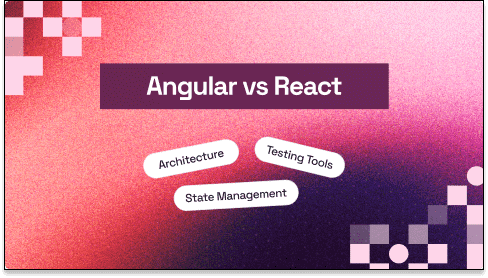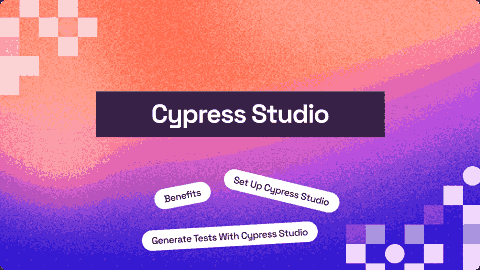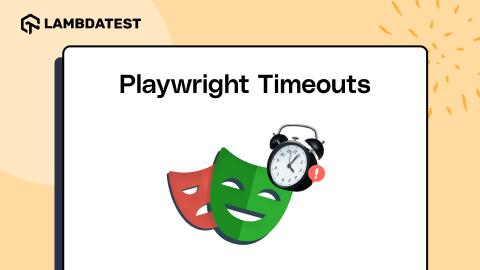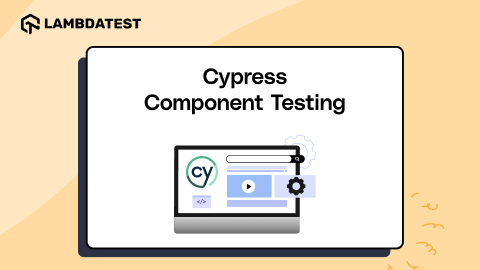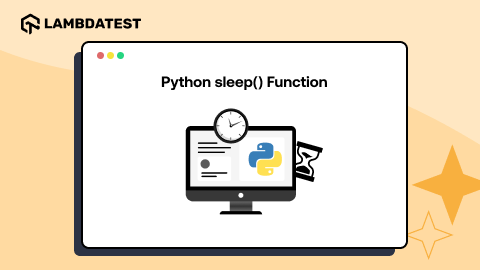47 Best Glowing Effects in CSS [2025]
Clinton Joy Fimie
Posted On: March 3, 2025
34 Min
Modern websites often feature visually appealing components like buttons, navigation bars, headers, hero sections, product galleries, and testimonials to captivate users. These components are styled intentionally to enhance user engagement and improve the overall user experience. One popular way to achieve this is by using the glowing effect.
The glowing effect in CSS make elements stand out and create a striking visual appeal. By applying subtle or vibrant glows to text, buttons, or other elements, developers can draw attention to key areas of a webpage.
In this blog, let’s look at some of the best glowing effects in CSS.
What Are Glowing Effects in CSS?
Glowing effects in CSS are visual styles that give elements a glowing appearance, making them seem as though they emit light. These effects are typically achieved using properties like:
- box-shadow: Adds shadow around an element’s frame, creating a glowing outline.
- text-shadow: Adds shadow to text, giving it a glowing appearance.
- outline: Draws a line around an element, which can be styled to appear as a glow.
- filter: This can be used with the drop-shadow() function to create complex glow effects.
By combining these properties, you can create various glowing styles to highlight important elements, add visual interest, or give your website a modern and futuristic look.
There are many ways to make your website look attractive, and glow effects are one of them. Below are some of the best glowing effects in CSS to help you improve your designs and enhance the user experience.
Best Glowing Effects in CSS
Glowing effects in CSS help you transform your website’s design with striking visuals and these effects can highlight key elements, enhance user interaction, and add a modern, captivating touch to your site.
These effects make your website stand out, from neon text to glowing buttons. Enhance your design with these eye-catching styles to captivate your visitors.
Glowing Effect in CSS for Cards
The glowing effect in CSS is a popular choice for designing websites, adding a touch of enchantment to elements like buttons. In its default state, it provides a subtle aura around the element.
Upon hover, the glow intensifies, creating a captivating transition that draws attention. This effect is ideal for highlighting key features or calls to action, such as hero sections or important buttons like ‘Subscribe.’

The example above showcases how the glowing effect in CSS can be applied to a website, enhancing its visual appeal and user engagement.
Glowing Effect in CSS for Neon Text
A common effect that gives text a beautiful, bright look is neon glow text. The lettering appears illuminated from within, simulating the glowing effect of neon lights. This glowing effect in CSS is frequently applied to headers, banners, and other prominent text elements to draw attention.

The example above showcases the neon glow effect. This is achieved by using the color property to set the base color of the text, while the text-shadow values add multiple layers of the same color with increasing blur radius to create the glowing effect.
This glowing effect in CSS can be customized by adjusting the color and shadow values to suit your preferences.
 Note
NoteValidate if your website works and appears as expected across 3000+ browsers and OS combinations. Try LambdaTest Today!
Glowing Effect in CSS for Button
A glowing button is a visually appealing user interface element that surrounds its border or text with a glowing effect in CSS. It’s frequently used to draw attention to crucial website buttons like “Get Started Free,” “Submit,” “Buy Now,” and “Learn More.”
Depending on the design needs, the glowing effect can be subtle or striking. The CSS box-shadow property and CSS3 animations can be used to create this effect.

The example above showcases the code styles of a button with a glowing effect in CSS. The .glow class applies a base glow to the button with a box-shadow, and the : hover pseudo-class intensifies the glow effect when the button is hovered over, creating a more pronounced visual impact.
Glowing Effect in CSS for Input Field
A glowing input field is a visually appealing way to highlight input elements on your webpage. By adding a subtle glow effect, you can draw attention to the input field when it’s focused or hovered over, enhancing the user experience.

This example showcases a stylish input field with a glowing effect in CSS when focused. The effect is achieved using simple CSS properties, including box-shadow and transition. The input field seamlessly integrates into any modern web design, enhancing the user experience by providing a visual cue when the field is active.
Glowing Effect in CSS for Box
A glowing box is a visually captivating element that highlights important sections or features on a webpage. This effect creates a soft, glowing aura around a box, making it stand out against the background.
It’s particularly useful for drawing attention to call-to-action areas, promotional content, or any section that needs emphasis.
The glowing box effect can be achieved using CSS properties such as box-shadow and transition.

The example above shows how the code creates a glowing box effect for a div element with the class .glowing-box. Initially, the box has a multi-layered glowing effect using box-shadow, which becomes more pronounced when the box is hovered over. The transition property ensures a smooth change in the glow effect during the hover state.
Glowing Effect in CSS for Text Animation
This eye-catching technique surrounds text elements with a pulsating glow, giving the impression that they light up and dim regularly. This effect is ideal for emphasizing promotional material, headlines, or any crucial information on a webpage. The text-shadow and motion are two CSS properties used to create this luminous text animation.

The provided code creates a glowing text animation effect for the < h1 > element with the class .glowing-text.
The text-shadow property initially applies a multi-layered glow in various colors, while the CSS keyframes animation gradually changes the glow effect between two states, creating a pulsating glowing effect in CSS.
The animation property ensures this transition occurs smoothly and repeatedly.
Glowing Effect in CSS for Border
A glowing border is an attractive effect that highlights an element’s border with a radiant glow. This effect is ideal for emphasizing specific sections, such as buttons, cards, or containers, making them stand out on the page.
It is also perfect for use during hover to highlight elements like buttons, cards, or containers. The glowing border effect is created using CSS properties such as box-shadow and animation.

The example above creates a glowing border effect for a div element. The border color smoothly transitions between magenta and cyan in a continuous animation, giving the appearance of a pulsating glow. The animation property ensures the border color alternates between the specified colors over a 2-second cycle.
Glowing Effect in CSS for Box Shadow
Glowing box shadow is a visually appealing effect that makes an element’s boundary stand out with a soft glow. It is often used to draw attention to important sections and parts of a website, such as call-to-action buttons, sliders, or featured content. The box-shadow and animation are helpful CSS properties for creating either a pulsating or steady glow effect.

The code creates a glowing box shadow effect for a div element. Initially, the box shadow has a soft magenta glow, which transitions to a more intense blue glow in a continuous animation. The animation property ensures that the glow effect pulsates smoothly over a 1.5-second cycle.
Glowing Effect in CSS for Text on Hover
The glowing text on hover effect activates a shiny appearance when the mouse is over the text, making it look radiant. This effect emphasizes important text, such as website links or calls to action, by adding movement to static messages and increasing user interaction. It is achieved using CSS properties like text-shadow to ensure a smooth transition during the hover animation.

The example above creates a glowing text effect that activates when the text is hovered over. Initially, the text has no shadow, but on hover, it gains a multi-layered magenta glow. The transition ensures the glowing effect in CSS appears smoothly over 0.5 seconds.
You can also learn more about it and related tutorials by subscribing to the LambdaTest YouTube Channel.
Glowing Effect in CSS for Outline
The glowing outline effect uses the outline property to create a glowing border around an element when a user hovers over it. This effect is ideal for highlighting buttons, images, or other interactive components on a webpage. The glow is achieved with the outline property combined with box-shadow and transition to create a smooth animation.

The example above creates a glowing outline effect for a div element. Initially, the glowing effect in CSS is invisible, but when the div is hovered over, a bright, blurred glow appears around it. This glow is achieved using pseudo-elements with box-shadow and transition for a smooth effect.
Glowing Effect in CSS for Neon Button
The neon glow button effect creates a vibrant and luminous appearance that resembles neon lights when a user hovers over it. This visually striking effect draws attention to important actions or links on a webpage. It is achieved using CSS properties like box-shadow and transition to create a glowing effect.

The example above creates a neon glow button effect. Initially, the button has a soft, diffused background glow that fades out when hovered over. On hover, a vibrant, multi-layered glowing effect in CSS appears around the button, drawing attention to it.
Glowing Effect in CSS for Neon Glow
The neon glow effect gives text a bright, vivid appearance, mimicking the glow of neon lights. This eye-catching effect draws attention to headings, banners, or other significant text components on a webpage. The luminous animation is achieved using CSS text-shadow and animation attributes.

The example above creates a neon glow effect for text. The text initially appears with a bright pink glow, which then transitions to a vibrant blue glow and back. This pulsating glowing effect in CSS is achieved using animations and text-shadow, creating an eye-catching visual.
Glowing Effect in CSS for Neon Input Fields
The neon text input effect enhances user perception of text fields by adding a bright, glowing neon effect when they are clicked or hovered over. This visually appealing detail not only improves visibility but also makes the input fields more intuitive and engaging, making form creation more effective.

The example above creates a neon glow effect for a text input field. Initially, the field has a simple design, but when it is hovered over or focused on, a vibrant magenta glowing effect in CSS appears around the input, enhancing its visibility and drawing attention to it.
Glowing Effect in CSS for Ring
The glowing ring effect creates a circular element with a glowing outline that becomes more prominent on hover. This effect draws attention to key elements on the website, making them more noticeable and enhancing user interaction.

The example above creates a glowing ring effect for a circular element. Initially, the ring has a static border, but on hover, it transitions into a pulsating animation with changing colors and glowing shadows. This glowing effect in CSS draws attention to the element and makes it more visually engaging.
Glowing Effect in CSS for Gradient
Creating a glowing gradient effect involves using CSS to apply a gradient background with a glowing animation. This effect is visually striking and is often used to highlight or draw attention to specific elements on a webpage.
The glowing ring effect creates a circular element with a glowing outline that becomes more prominent on hover, attracting users’ attention to critical elements on the website and enhancing visibility.

The example above creates a glowing gradient effect for a text element. The background colors smoothly transition and shift, creating a dynamic and vibrant glowing effect animation.
This draws attention to the element and gives it a visually appealing and engaging look.
You can also explore creating gradient shadows to elevate your web content and improve your UI’s visual appeal.
Glowing Effect in CSS for Checkbox
A glowing checkbox is an enhanced UI element that uses CSS to create a glowing effect around the checkbox when it is checked or hovered over. This glowing effect in CSS is visually appealing and makes checkboxes stand out, improving user experience by making them more noticeable and interactive.

The example above creates a glowing effect in CSS for a checkbox. When the checkbox is checked, the checkmark becomes visible, and the surrounding area emits a glowing light, making the checkbox more noticeable.
The glowing effect is achieved through CSS transitions and box-shadow.
Glowing Effect in CSS for Radio Button
A glowing radio button is an interactive UI element that uses CSS to create a glowing effect around the radio button when selected or hovered over. The effect enhances visual appeal and user experience by making the radio button more noticeable and engaging.

The example above creates a glowing effect in CSS for radio buttons. Initially, the radio buttons are hidden, and their labels appear as circles. When a radio button is selected, its label changes color and shows a glowing effect around it, enhancing visibility and interaction.
Glowing Effect in CSS for Toggle Switch
A glowing toggle switch is an interactive UI element that enhances user experience by visually indicating the switch’s state (on or off) with a glowing effect in CSS. This effect makes the toggle switch more engaging and noticeable, especially in dark-themed designs.

The example above creates a glowing toggle switch that visually indicates its state with a glowing effect. When the switch is checked, the background changes to green with a glow effect, and the toggle moves to the right, enhancing the switch’s visibility and interactivity
Glowing Effect in CSS for Menu Item
The glowing menu item is an interactive navigation element that highlights menu items when they are focused on or hovered over. This glowing effect in CSS improves the user interface by making the navigation visually appealing and engaging. It provides instant visual feedback, helping users easily identify their location in the site hierarchy.

The example above creates a navigation menu where menu items have a subtle background color and no text decoration. When hovered over, each menu item gains a glowing effect with a bright cyan box-shadow, enhancing its visual appeal and making it more noticeable to users.
Glowing Effect in CSS for Navigation Bar
A glowing navigation bar is an engaging UI element that highlights the entire navigation bar or its items with a glowing effect in CSS. This visual enhancement draws attention to the navigation area, making it more prominent and appealing.
By incorporating a glowing effect, the navigation bar stands out, guiding users effortlessly toward the main menu options and ensuring easy interaction.

The example above creates a glowing navigation bar with a light cyan glow around the entire nav area and individual menu items. When a user hovers over a menu item, the text color changes to cyan, and the item gains a glowing shadow, enhancing the visibility and appeal of the navigation options.
Glowing Effect in CSS for Loader
A glowing loader is an animated element that indicates loading or processing on a webpage. It uses a glowing effect to create a visually appealing and engaging animation. This glowing effect helps keep users informed that a process is ongoing, enhancing the user experience during wait times.
The glowing effect in CSS helps users remember that a process is in progress, improving UX during the wait. CSS3 animations and the box-shadow property are typically used to achieve this effect.

The example above creates a glowing loader animation. The loader rotates continuously while also pulsing with a glowing effect in CSS. The rotation is smooth and constant, while the glowing effect alternates between bright and dim states to enhance visual appeal during loading.
Glowing Effect in CSS for Progress Bar
A glowing progress bar is a dynamic and visually engaging UI feature that indicates the status of a job or process. Often used in web applications, it provides users with an aesthetically pleasing and clear way to view task completion.
The glowing effect in CSS enhances the progress bar’s visibility and appeal, using CSS animations and attributes like box-shadow, and can also involve JavaScript for dynamic updates.

The example above creates a glowing progress bar that visually represents the progress of a task. The bar fills up from 0% to 100% over time, with a glowing effect applied to it using CSS animations. The JavaScript code dynamically increases the width of the bar, simulating progress as it advances.
Glowing Effect in CSS for Modal
A glowing modal is a pop-up dialog that appears on top of the main content of a webpage, often used to capture user attention for important information, alerts, or forms.
The glowing effect enhances the modal’s visibility and makes it more eye-catching. This effect can be achieved using CSS properties such as box-shadow and keyframes for animations.

The example above implements a modal dialog that appears when the “Open Modal” button is clicked, displaying a glowing effect around the modal content. The modal can be closed by clicking the close button, which hides the modal. The glowing effect in CSS is achieved through CSS animations.
Glowing Effect in CSS for Tooltip
A glowing tooltip is a small pop-up box that appears when you hover over an element, providing additional details or context. This feature helps give clarifications or extra information without cluttering the main content.
This glowing effect in CSS enhances the tooltip’s visibility, making it more eye-catching and ensuring that users notice and can easily read the extra information. This is achieved through CSS shadows and animations that create a bright, striking look.
In the example above, when you hover over the element, a tooltip with additional text appears above it. The tooltip has a glowing effect and becomes fully visible with a smooth transition, providing more context or details without cluttering the main content.
Glowing Effect in CSS for Drop-down
Creating a glowing drop-down menu involves adding a subtle glowing effect in CSS to enhance the visibility and attractiveness of the menu items when hovered over.
The above example creates a drop-down menu where the menu button and items have a glowing effect when hovered over. The drop-down content is hidden by default and only appears when the user hovers over the menu button, with the items also gaining a glowing effect on hover to highlight them.
Glowing Effect in CSS for Table
A glowing table is an HTML table that features a glowing effect applied to its rows or cells, typically when a user hovers over them. This glowing effect in CSS enhances the table’s visual appeal and provides immediate visual feedback, making it easier to track which row or cell is being interacted with.

The example above creates a glowing table that applies a glowing effect to the rows when hovered over, using a box-shadow to create a visually appealing highlight. This effect animates between different glow intensities, enhancing the table’s interactivity and making it easier for users to track their cursor’s position within the table.
Glowing Effect in CSS for Card
A glowing card is a visual design element that uses a glowing effect around its edges or contents to make it stand out. This glowing effect in CSS is often used to highlight sections such as product cards, call-to-action areas, or important information blocks.
The example above creates a glowing card with a rotating, colorful background effect. The card’s background features a conic gradient with a blur effect, giving it a glowing appearance. The content within the card remains visible and centered while the glowing effect animates in the background.
Glowing Effect in CSS for Banner
A glowing banner can be created using HTML and CSS to build a container that resembles a banner with a glowing effect in CSS. This visually appealing feature makes the banner stand out and draws attention, often used to highlight important information, sales, or calls to action.

The example above code creates a card with a glowing effect in CSS that activates when the user hovers over it. The card initially displays a subtle shadow, but when hovered, it gains a more pronounced glowing shadow. The card also contains text and a button that changes color on hover for enhanced interactivity.
Glowing Effect in CSS for Alert Box
You can make important messages stand out with a glowing alert box. This glowing effect in CSS draws attention to alerts, ensuring they don’t go unnoticed.

The example above creates a glowing alert box designed to highlight important messages with a visually striking effect. It uses a glowing shadow to attract attention and slightly enlarges when hovered over to enhance visibility.
Glowing Effect in CSS for Avatar
A glowing avatar is a visually appealing UI element used to represent users or profiles with an added glowing effect for emphasis or aesthetic enhancement.
![]()
The example above creates a navigation bar with a logo and a set of menu items. It includes a glowing avatar effect applied to a profile image, which is animated to draw attention. The navigation bar has a white background with a shadow for visual depth, and the avatar has a pulsating glow to highlight it.
Glowing Effect in CSS for Calendar
A glowing calendar is a visual element used to highlight events, schedules, or dates with a glowing effect for emphasis or aesthetic enhancement.

The example above creates a date input field with a glowing effect. The calendar input box has a subtle glow that intensifies when the user hovers over or focuses on it, making it visually stand out against a dark background.
Glowing Effect in CSS for Slider
A glowing slider is an interactive UI element that allows users to select a value by dragging a thumb control along a track. Adding a glowing effect enhances the slider’s visibility and attractiveness, making it more engaging and easier to use.

The example above creates glowing slider effects that allow users to select a value by dragging a thumb control along a track. The slider is styled to have a glowing effect on the thumb and track, enhancing its visibility and visual appeal. The selected value is displayed above the slider.
Glowing Effect in CSS for Tab
A glowing tab is a navigation element that allows users to switch between different sections of content on a webpage. The glowing effect in CSS highlights the active tab and provides visual feedback. This design enhances the tab’s visibility and indicates the currently active section or category.

The example above creates a glowing tab design that includes navigation links styled as tabs. When a user hovers over a tab, it displays a glowing effect and highlights its border. When active, the tab’s glow intensifies, providing visual feedback on interaction.
Glowing Effect in CSS for Accordion
A glowing accordion is a UI element with collapsible content sections. It allows users to expand or collapse sections to view or hide content. The glowing effect in CSS enhances visibility and provides visual feedback for active or hovered sections.

The example above creates a glowing accordion component with collapsible sections. When a section header is clicked, it expands to reveal its content and highlights with a glowing effect. Only one section can be expanded at a time, as other sections will collapse when a new section is activated.
Glowing Effect in CSS for Pagination
Glowing pagination is a UI component that provides navigation links for browsing through multiple pages of content. It improves user experience by visually indicating the current or hovered page with a glowing effect.
Creating a glowing pagination involves designing a UI element that enables navigation through various pages, with a glowing effect to highlight the active or hovered page.

The example above creates a pagination component with navigation links that highlight a glowing effect in CSS when hovered over. JavaScript is used to add and remove a glowing effect on the pagination links based on mouse interactions, enhancing their visual feedback and interactivity.
Glowing Effect in CSS for List
A glowing list is a UI component that enhances visual feedback for interacting with list items, such as in navigation menus or item selections. It typically uses CSS transitions and pseudo-elements to create a glowing effect.

The example above creates a glowing list that enhances user interaction with list items by applying a glowing effect when an item is hovered or focused. Each list item has a background color transition, and a glowing animation is applied to the pseudo-element behind the link, creating a visual highlight effect.
Glowing Effect in CSS for Quote
A glowing quote is a design enhancement for blockquote elements, adding visual emphasis to the quoted text. It highlights the text when interacted with, making it stand out. This glowing effect in CSS is achieved by applying a glowing visual style to the blockquote element.

The example above creates a blockquote element with a glowing effect. When the user hovers over the blockquote, it becomes more illuminated with a brighter shadow. The blockquote is styled with decorative quote marks and a highlighted border, making it visually prominent on the page.
Glowing Effect in CSS for Code Block
A glowing code block is a visually enhanced display of code snippets used to highlight programming examples or specific syntax elements. It applies a CSS effect that adds a box shadow or border, which changes on hover to make the code block stand out.

The example above creates a glowing effect for a code block on a webpage. The effect is achieved by applying a multi-layered box shadow and a rotating, semi-transparent overlay that animates, making the code block visually stand out and continuously pulse with a glow.
Glowing Effect in CSS for Badge
A glowing badge is a visually appealing UI element used to highlight or indicate status, achievements, or notifications. This eye-catching component effectively draws user attention, making it ideal for emphasizing important information or rewards within an application or website.

The example above creates a glowing badge that highlights status or notifications. It has a subtle glow effect by default, which intensifies with a red glowing shadow when the user hovers over it, drawing more attention to the badge.
Glowing Effect in CSS for Social Media Icon
A glowing social media icon is a visually enhanced version of a social media platform’s logo, designed to attract attention and encourage interaction with social media links or buttons on a webpage. It uses CSS to create a glowing or pulsating effect, making the icon more engaging and noticeable when interacted with by the user.
![]()
The example above creates a set of social media icons displayed in a row and centered on the page. When a user hovers over any icon, a glowing effect in CSS is applied, making the icon more noticeable.
Glowing Effect in CSS for Share Button
A glowing share button uses HTML and CSS to make the button more noticeable and inviting to click. This glowing effect in CSS is achieved by applying a pulsating visual enhancement to the button.

The example above creates a button with a glowing effect that becomes more intense when hovered over. Initially, the button has a subtle glow, which intensifies with a brighter, larger glow and changes text color when the user hovers over it.
Glowing Effect in CSS for Comment Box
A glowing comment box is a UI element designed to catch the user’s attention and offer visual feedback, often triggered by hovering. The glow effect is created through CSS adjustments to the box-shadow, simulating a light glow around the box.

The example above creates a comment box interface with a text area and a submit button. When the user focuses on the text area, it glows with a blue shadow effect, while hovering over the button changes its background color and adds a glowing shadow, making the interface visually engaging and interactive.
Glowing Effect in CSS for Contact Form on Hover
A glowing contact form is a visually enhanced user interface element that provides feedback when hovered over. This glowing effect in CSS is used to modify properties like box-shadow and background-color, creating a glowing or highlighted appearance.

This example above creates a contact form with fields for a user’s name, email, and message. The form features a subtle glowing effect on hover, enhancing its visual appeal and drawing user attention. The styling is focused on clean design and readability, with consistent fonts, colors, and spacing.
Glowing Effect in CSS for Search Bar
A glowing search bar is a visually enhanced user interface element that provides feedback when hovered over. This effect is achieved using CSS to modify properties such as box-shadow and background-color, creating a glowing or highlighted appearance.

A glowing search bar is a visually enhanced user interface element that provides feedback when hovered over. This glowing effect in CSS is used to modify properties like box-shadow and background-color, creating a glowing or highlighted appearance.
Glowing Effect in CSS for Login Form
A glowing login form with animation uses CSS keyframes to create a continuous glowing effect around the form. This glowing effect in CSS provides visual interest and feedback to users, making the form more engaging without requiring interaction.

The example above creates a login form with a glowing effect for the input fields and the submit button. When the user focuses on an input field or hovers over the button, a glowing effect is applied, enhancing the form’s appearance and providing visual feedback.
Glowing Effect in CSS for Register Form
A glowing register form with animation uses CSS keyframes to create a continuous glowing effect around the form. This effect enhances user interaction and provides visual feedback, making the form more engaging.

The example above creates a registration form with fields for username, email, and password. The form has a glowing effect on focus and hover, providing visual feedback to users. It features a clean, modern design with animations to make the form more engaging.
Glowing Effect in CSS for Error Message
To emphasize critical information such as form validation errors or alerts, use a glowing error message. This UI enhancement uses CSS animations to create a pulsating glow around the error message, making it more noticeable and urgent.

The example above creates a glowing error message that is designed to attract attention by creating a pulsating glow effect around it. This is achieved through CSS animations that alternate the intensity of the glow, making the message more noticeable and urgent. The background and border colors emphasize the error, while the glowing effect ensures the message stands out.
The above demos are displayed using LambdaTest, a cloud-based platform with real-time testing capabilities. When implementing glowing effects in CSS across various UI elements, ensuring consistent performance and responsiveness across different browsers and devices is crucial.
LambdaTest’s LT Browser allows you to validate responsiveness on a wide range of mobile devices, offering over 53 device viewports for side-by-side comparisons. It provides pre-installed viewports for mobiles, tablets, desktops, and laptops, enabling synchronized interactions like scrolling and clicking for thorough cross-browser and device testing.
To begin testing your application responsiveness and maintain browser compatibility with LT Browser, click the download button below. After downloading the .exe file, run it to explore all the features and capabilities of LT Browser.
Watch the video tutorial below to familiarize yourself with the features and functionalities of LT Browser.
Conclusion
Exploring various glowing effects across UI elements reveals a versatile toolkit for enhancing user experience and visual appeal in web design. Each effect, from buttons to forms and icons, serves a unique purpose in guiding interaction and emphasizing key information.
Glowing effects primarily use CSS properties like box-shadow, border, and outline, along with animations defined through CSS keyframes. These techniques not only add aesthetic value but also improve usability by drawing attention and providing clear visual feedback.
Knowing when and how to apply glowing effects is crucial. They highlight interactive elements, improve form validation, and add depth to design elements. Customization options abound, allowing for tailored effects that match branding and UI requirements.
Frequently Asked Questions (FAQs)
What is the blur effect in CSS?
How do I make links glow in CSS?
How to create a glass effect in CSS?
How to give a glossy effect in CSS?
Author
- What Are Glowing Effects in CSS?
- 47 Best Glowing Effects in CSS
- Glowing Effect in CSS for Cards
- Glowing Effect in CSS for Neon Text
- Glowing Effect in CSS for Button
- Glowing Effect in CSS for Input Field
- Glowing Effect in CSS for Box
- Glowing Effect in CSS for Text Animation
- Glowing Effect in CSS for Border
- Glowing Effect in CSS for Box Shadow
- Glowing Effect in CSS for Text on Hover
- Glowing Effect in CSS for Outline
- Glowing Effect in CSS for Neon Button
- Glowing Effect in CSS for Neon Glow
- Glowing Effect in CSS for Neon Input Fields
- Glowing Effect in CSS for Ring
- Glowing Effect in CSS for Gradient
- Glowing Effect in CSS for Checkbox
- Glowing Effect in CSS for Radio Button
- Glowing Effect in CSS for Toggle Switch
- Glowing Effect in CSS for Menu Item
- Glowing Effect in CSS for Navigation Bar
- Glowing Effect in CSS for Loader
- Glowing Effect in CSS for Progress Bar
- Glowing Effect in CSS for Modal
- Glowing Effect in CSS for Tooltip
- Glowing Effect in CSS for Drop-down
- Glowing Effect in CSS for Table
- Glowing Effect in CSS for Banner
- Glowing Effect in CSS for Alert Box
- Glowing Effect in CSS for Avatar
- Glowing Effect in CSS for Calendar
- Glowing Effect in CSS for Slider
- Glowing Effect in CSS for Tab
- Glowing Effect in CSS for Accordion
- Glowing Effect in CSS for Pagination
- Glowing Effect in CSS for List
- Glowing Effect in CSS for Quote
- Glowing Effect in CSS for Code Block
- Glowing Effect in CSS for Badge
- Glowing Effect in CSS for Social Media Icon
- Glowing Effect in CSS for Share Button
- Glowing Effect in CSS for Comment Box
- Glowing Effect in CSS for Contact Form on Hover
- Glowing Effect in CSS for Search Bar
- Glowing Effect in CSS for Login Form
- Glowing Effect in CSS for Register Form
- Glowing Effect in CSS for Error Message
- Frequently Asked Questions (FAQs)







